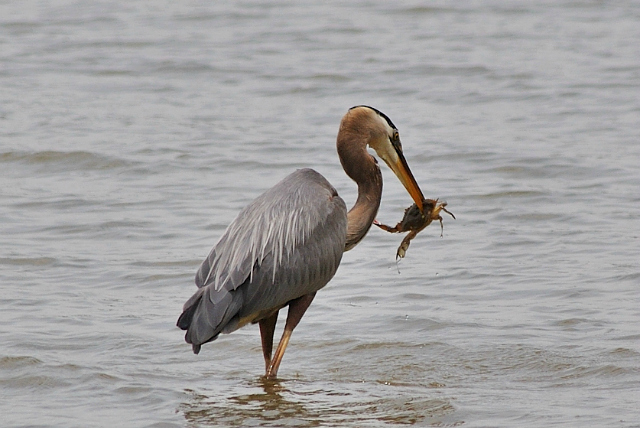Read Our Blogs
Crabs of the Chesapeake Bay
Shared by Melissa Magnuson, as Guest Blogger.
Posted May 8, 2020 | Updated Feb. 2, 2021
When you think about the creatures that live in the Chesapeake Bay, what comes to mind? The wide variety of shorebirds? The various species of fish? The Eastern Oyster and its long history living adjacent to humans? How about crustaceans?
Let's take a look at a few of those crusty creatures.
Blue Crab
What immediately comes to my mind is the Blue Crab with its blue-tinted shell and the large role in the local fishing communities. The Blue Crab is a keystone species, meaning that it serves as both predator and prey and the other creatures living in the Bay region are highly dependent upon their survival. Even though they have a large claim to fame, they are not the only crabs that live in the Chesapeake Bay.
Atlantic Ghost Crab
Another species of crab that can be commonly found in the Bay region is the Atlantic Ghost Crab. It is called the Ghost Crab because of its coloring and its ability to flatten their bodies under the sand's surface to hide from potential predators. If you are ever walking along the beach where these crabs can be found, make sure to watch where you step; you might feel them underfoot before you see them.
Hermit Crab

Hermit Crabs have very soft abdomens and have to seek shelter in the form of a vacant shell. As they continue to grow, they need to move to a larger home, which can get pretty competitive with the other "renters" living in the shallow waters and estuaries. There are three kinds of Hermit Crabs found in the Chesapeake Bay area of Virginia. The Long-clawed, the Broad-Clawed and the Banded.
Horseshoe Crab
Just for fun! While technically it's not a crustacean but more closely related to spiders and scorpions, this living fossil is quite interesting. There is evidence that the Horseshoe Crab has existed for almost 300 million years. Like most crabs, the Horseshoe Crab must molt to grow, leaving behind its carapace or shell. The shell is what beachgoers normally find while visiting the Bay and its surrounding environments. Besides being a living fossil, the Horseshoe Crab can also swim upside down and survive for an extended period of time outside of the water as long as its gills are kept moist.
Great Blue Heron and a Blue Crab Dinner
The next time you are walking along the beach, keep your eyes peeled for these, as well as the other crabs that call the Chesapeake Bay area home. Some other species to look out for include; Fiddler Crabs, Common Spider Crab, the Chinese Mitten Crab and the Marsh Crab. You never know which friend you might come across on your next trip to the beach!
Learn more about the Virginia State Parks located in the Chesapeake Bay area: False Cape State Park | First Landing State Park | Kiptopeke State Park
If you have read the article and have a question, please email nancy.heltman@dcr.virginia.gov.
Search for blogs
By Park
Categories
Cabins
Camping
Fishing
History and Culture
Other
Programs and Events
Trails
Volunteers
Water Fun
Archive
2025
2024
2023
2022
2021
2020
2019
2018
2017
2016
2015
2014
2012

















